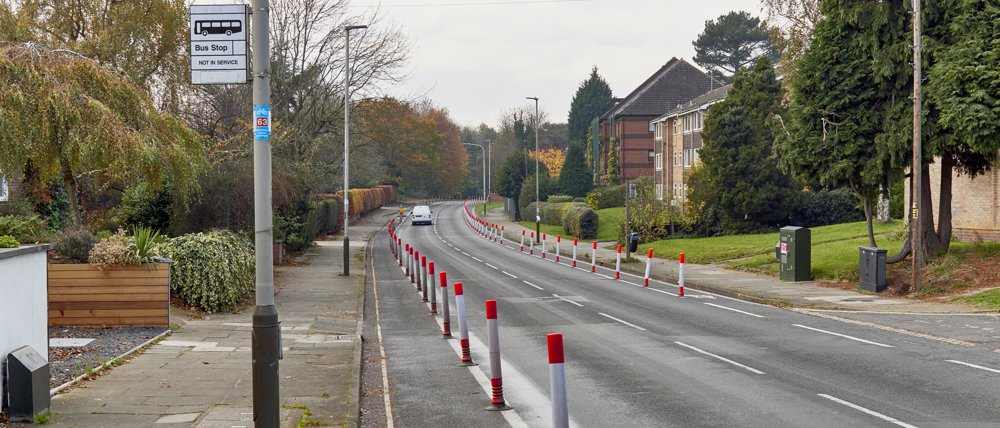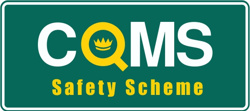A guide to reallocating road space in response to Covid-19 was published by the Department for Transport on 12th January 2021 and applies to all highway authorities in England. It is additional to the guidance in the Traffic Management Act (2004) and replaces the guidance published on 9th May 2020 and 23rd May 2020. The government now expects local authorities to make significant changes to their road layouts to give more space to cyclists and pedestrians, which will help embed the altered behaviours that have come as a result of the pandemic, and also demonstrate the positive effects of active travel. A summary of the updated guidance is therefore provided below, and useful links are provided at the end.
Reallocating road space: measures
While measures should be taken as swiftly as possible, this should not be at the expense of consulting local communities. Any measures for cycling should be designed to meet the requirements set out in https://www.gov.uk/government/publications/cycle-infrastructure-design-ltn-120.
Measures include:
- Installing cycle facilities with a minimum level of physical separation from volume traffic; converting traffic lanes into cycle lanes; widening existing cycle lanes to enable cyclists to maintain distancing. Facilities should be segregated as far as possible.
- Encouraging walking and cycling to school e.g., ‘school streets’, areas around schools where motor traffic is restricted at pick-up and drop-off times, during term-time.
- Reducing speed limits: 20mph speed limits are being more widely adopted as an appropriate speed limit for residential roads, and many through streets in built-up areas.
- Introducing pedestrian and cycle zones: restricting access for motor vehicles at certain times (or at all times) to specific streets, or networks of streets, particularly town centres and high streets.
- Modal filters (also known as filtered permeability); closing roads to motor traffic, for example by using planters or large barriers.
- Providing additional cycle parking facilities at key locations, e.g., stations and in high streets, to accommodate an increase in cycling, for example by repurposing parking bays to accommodate cycle racks.
- Changes to junction design to accommodate more cyclists, as set out in LTN 1/20.
- ‘Whole-route’ approaches to create corridors for buses, cycles and access only on key routes into town and city centres.
- Identifying and bringing forward permanent schemes already planned that can be constructed relatively quickly.
- Changes to social distancing requirements may mean temporarily widened footways are no longer needed in many places, and authorities should consider removing these, however, the potential to encourage walking - through more permanent changes - should be carefully considered. Space may still be needed for people to move about safely and local lockdowns may also require social distancing measures to be reinstated.
- Space at bus stops will still be needed to allow people to queue and socially distance; along with widened pedestrian refuges and crossings (both formal and informal) to enable people to cross roads safely and at a distance.
Other Considerations
Some interventions may require Traffic Regulation Orders (TROs), of which there are different types, the main ones are:
- Permanent: this process includes prior consultation on the proposed scheme design, a 21-day notice period for statutory consultees and others who can log objections; there can be a public inquiry in some circumstances.
- Experimental: used to trial schemes that may then be made permanent. Authorities must put in place monitoring arrangements and carry out ongoing consultation once the measure is built. Local residents and businesses should still be given an opportunity to comment on proposed changes. Schemes are subject to a requirement for ongoing consultation for 6 months once in place.
- Temporary: these can be in place for up to 18 months. There is a 7-day notice period prior to making the TRO and a 14-day notification requirement after it is made, plus publicity requirements.
Emergency legislation came into force on 23rd May 2020 to introduce an emergency procedure for the making of temporary traffic orders. The main change is to the means of advertising the order, which can be via digital means. Once the order has been made, a second notice still needs to be published for information within 14 days, via a newspaper. There has been no change to the notice periods.
Authorities should consider exempting from restrictions vehicles that deliver essential services and that are easily identifiable for enforcement purposes, such as Royal Mail, emergency services, and rubbish collection vehicles.
Traffic signs may be needed to inform of changes to road layouts and authorities should monitor and evaluate any temporary measures they install, with a view to making them permanent, and embedding a long-term shift to active travel as we move from restart to recovery. Additionally, street works and maintenance activity must continue to be permitted.
Blue Badge Holders
Any changes to Blue Badge parking provision need to be carefully considered and local groups representing disabled people should be consulted. If cycling and walking schemes require bays to be moved, alternatives should be provided such as relocating bays elsewhere nearby, bearing in mind the need for such bays to be close to shops and services.
Engagement and consultation
Effective engagement with the local community, particularly at an early stage, is essential to ensuring the political and public acceptance of any scheme. The department advises engagement as good practice even where there is no legal requirement to do so for the measures being proposed. The following input should be sought in particular:
- Local chiefs of police and emergency services must be consulted to ensure access is maintained where needed.
- Local businesses, including Business Improvement Districts, those based on local high streets and those that are temporarily closed, should be informed and given an opportunity to comment to ensure proposals meet their needs. The need for kerbside access for deliveries and servicing should be taken into account (e.g., floating loading bays).
- Royal Mail to ensure access can be maintained to post boxes and premises.
- Local disability groups. Any online engagement or consultation materials should comply with the Public Sector Bodies (Websites and Mobile Applications) (No. 2) Accessibility Regulations 2018 to ensure they are accessible to disabled people.
Digital map providers should also be informed of changes to avoid drivers being given a route that is closed to them.
Finally, accessibility requirements apply to all measures, both temporary and permanent. The Public Sector Equality Duty still applies, and in making any changes to their road networks, authorities must ensure that elements of a scheme do not discriminate, directly or indirectly, and must consider their duty to make reasonable adjustments anticipating the needs of those with protected characteristics. Guide Dogs, RNIB, the Thomas Pocklington Trust and Visionary have jointly produced a guidance document for local authorities which provides advice on designing temporary measures for visually impaired people.
How we reacted to the guidance
As a result of this guidance, local authorities have a greater ability to put in place measures to give more space to pedestrians and cyclists and can do so in a quick and efficient way. However, it is important that any measures implemented are subject to the appropriate safety audit procedures and meet the standards set out in the Cycle infrastructure design document and meet accessibility and equality requirements.
Experts in transport planning and travel plans, Mayer Brown Limited are currently assisting a number of our local authority clients on emergency / temporary road space reallocation schemes. Please contact us if you require any assistance on these types of projects.
Useful Links
Traffic Management Act 2004: network management in response to COVID-19 - GOV.UK (www.gov.uk)
Cycle infrastructure design (LTN 1/20) - GOV.UK (www.gov.uk)
Making traffic regulation orders during coronavirus (COVID-19) - GOV.UK (www.gov.uk)
Street design guidance for local authorities (guidedogs.org.uk)







